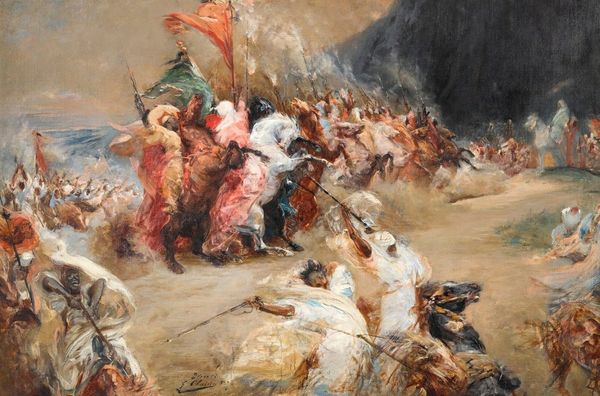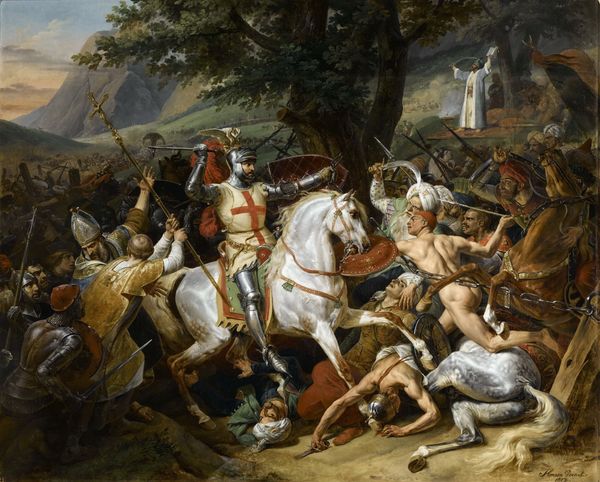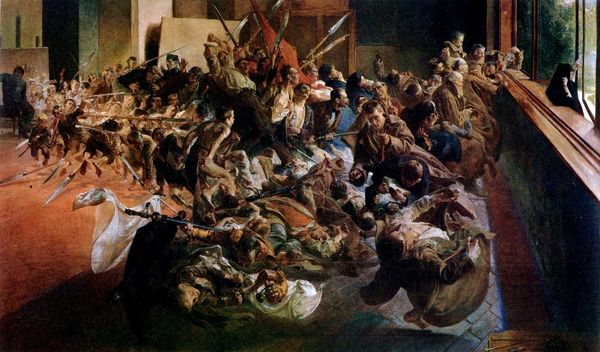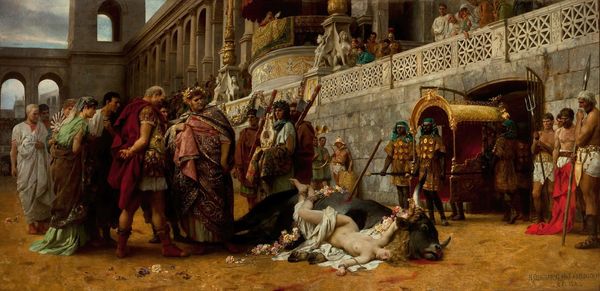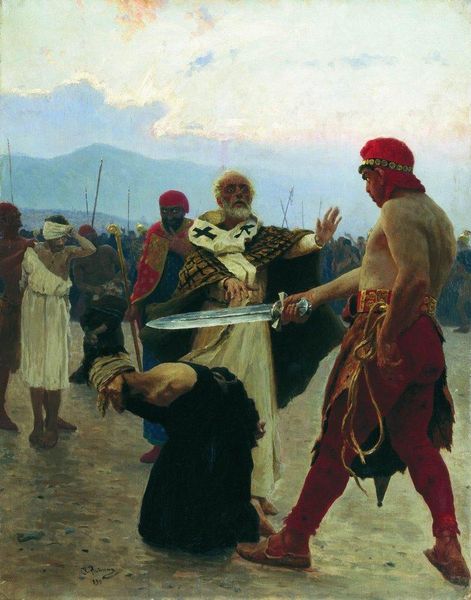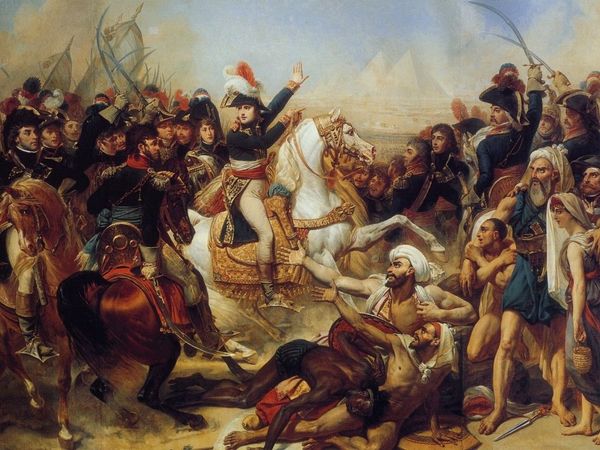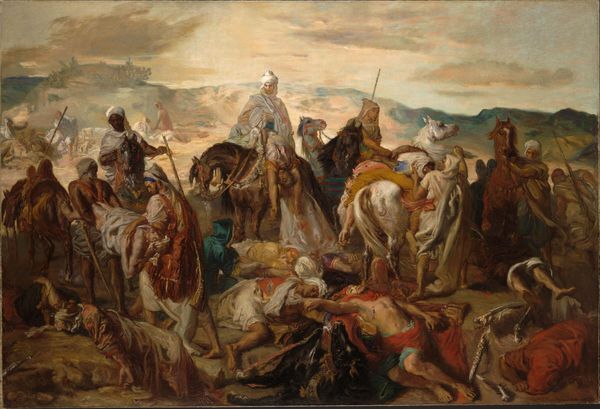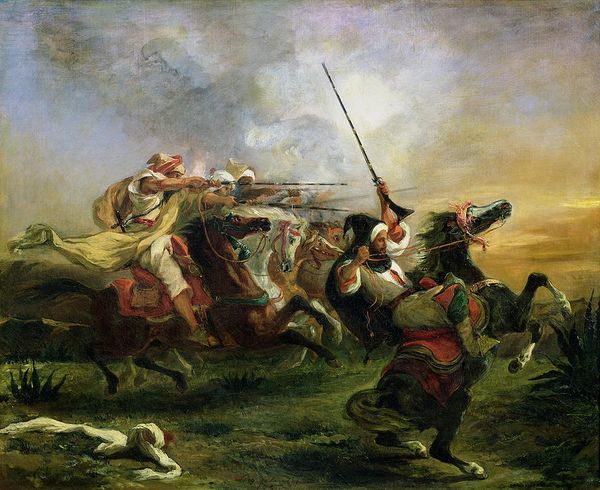
painting, oil-paint
#
portrait
#
figurative
#
painting
#
oil-paint
#
painted
#
oil painting
#
group-portraits
#
genre-painting
#
history-painting
#
portrait art
#
realism
Copyright: Public Domain: Artvee
Editor: Okay, so here we have Ilya Repin's "The Reply of the Zaporozhian Cossacks to Sultan Mehmet IV," painted in oil between 1880 and 1891. It’s such a boisterous and lively scene! I’m curious, what draws your eye in this composition? Curator: What strikes me is the clear display of labour embedded in its production. Look closely at the visible brushstrokes, the thick impasto, which all point to the sheer physical effort required to produce a work of this scale. Repin wasn't simply depicting Cossacks; he was *working*, just like them. And with what resources and what kind of labour organization did Repin realize this complex and layered figurative painting? Editor: So you see the painting process itself as a key element? I guess I was more focused on the subject matter – the Cossacks themselves. Curator: Precisely. Consider the socio-economic context. Repin, painting in oil for a presumably wealthy patronage network, elevates a band of supposedly uncouth warriors, individuals existing seemingly outside capitalist production and political subordination. The labour involved in the letter, in resistance, mirrors Repin's own artistic labour. Notice, also, the array of textiles and textures meticulously rendered. Editor: You’re right, the rendering of their clothing and weaponry is very detailed. How does that fit in? Curator: This careful depiction is crucial to understand its material significance. Were these fabrics locally produced, imported? Were these the Cossacks' means of war, sustenance and power, literally produced by labour? By showcasing the *stuff* of their world so vividly, Repin draws our attention to the material conditions that shape their identity. What kind of brushes were available at the time, and what pigments were used, also come into play. Editor: I hadn't really thought about it in terms of materials before, more as just a historical scene. Now I see how the material choices and the act of painting itself contribute to the story. Curator: Exactly. By engaging with its materiality, we uncover its role within the cultural and economic landscapes. It all comes back to production, doesn't it?
Comments
No comments
Be the first to comment and join the conversation on the ultimate creative platform.



